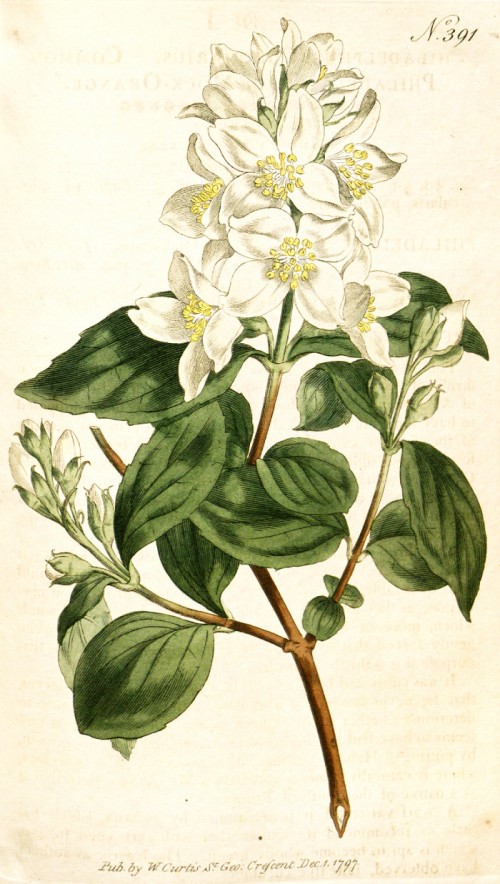Dies ist eine alte Version des Dokuments!
Philadelphus coronarius L. - Hydrangeaceae
(sweet) mock-orange, English dogwood, Seringat, Jasmin des poètes (fr.), Europäischer Pfeifenstrauch, Falscher Jasmin
Deciduous shrub, up to 4m tall, native from Central and Southeast Europe to Western Asia, cultivated and naturalized elsewhere; leaves opposite, oval, dentate; racemes of white to yellowish white flowers, 2.5-3.5cm in diam., strongly aromatic.
„It is a popular ornamental plant for gardens in temperate regions, valued for its profuse sweetly scented white blossom in early summer.“ http://en.wikipedia.org/wiki/Philadelphus_coronarius
The pre-female 'nectar producing disk flowers' are pleasantly fragrant, especially in the evening and then particularly intense. http://de.wikipedia.org/wiki/Philadelphus_coronarius
Trans-myrtanal (46%), cis-myrtanal (2.2%), myrtenal, myrtenol, indole, nopinone (5.3%), 2-aminobenzaldehyde, 2-formamidobenzaldehyde and veratraldehyde have been determined in the headspace of living flowers by GC-MS analysis. Flowers from another single plant showed an entirely different composition with hugh amounts of acetophenone (20%) and indole (10%).
[The composition of the headspace from fragrant flowers: Further results., Joulain D., Flavour and Fragrance J 1987; 2: 149-155]
Feeding experiments with 13C- and fluorine-labelled precursors revealed that the biosynthesis of 2-aminobenzaldehyde in flowers of Robinia pseudoacacia and Philadelphus coronarius is realized by transformation of anthranilic acid to indole followed by oxidative ring opening and hydrolysis of the resulting N-formyl-2-aminobenzaldehyde.
[Biosynthesis of 2-aminobenzaldehyde in flowers of Robinia pseudoacacia and Philadelphus coronarius., Spiteller, P., Steglich, W., Phytochemistry, Vol.57(3), 2001, 361-363]

Botanical Magazine, Vol.11, t.391 (1797)
http://plantgenera.org/species.php?id_species=777547

